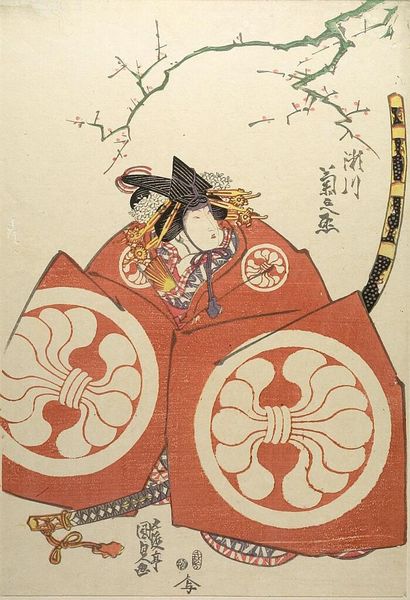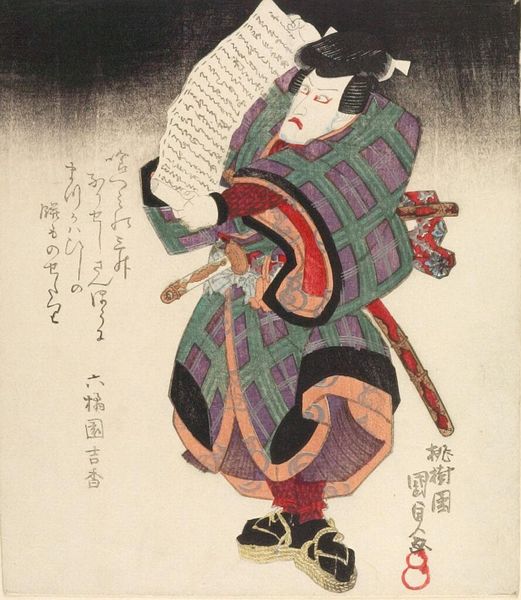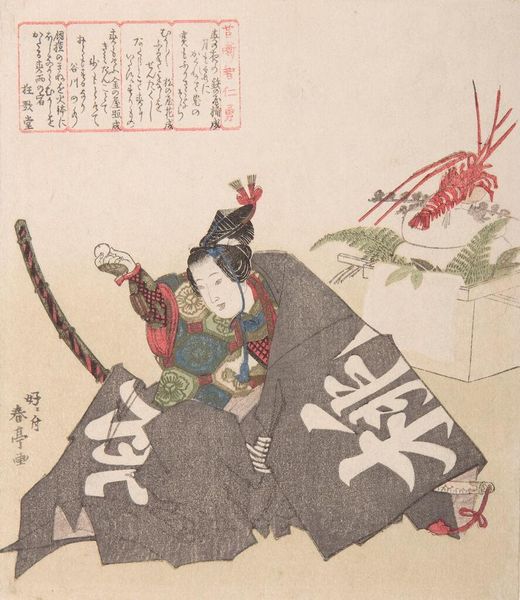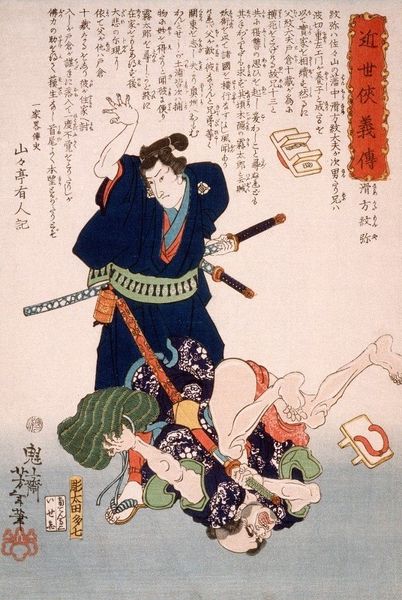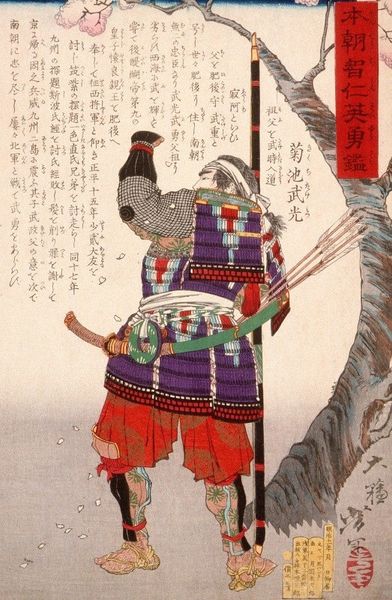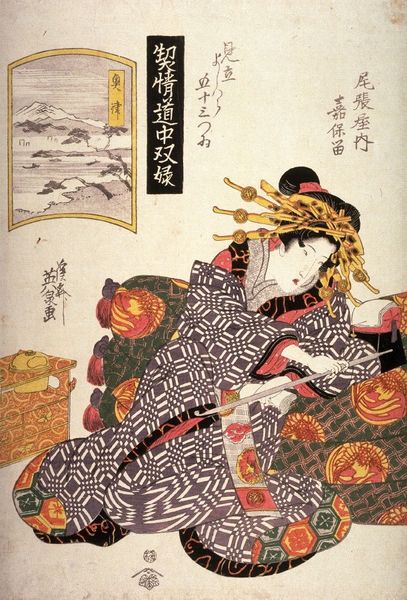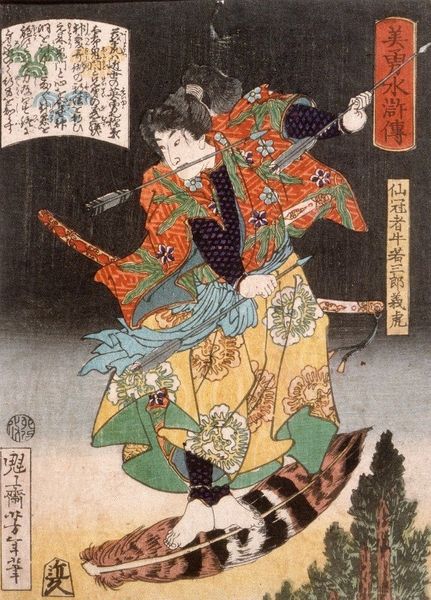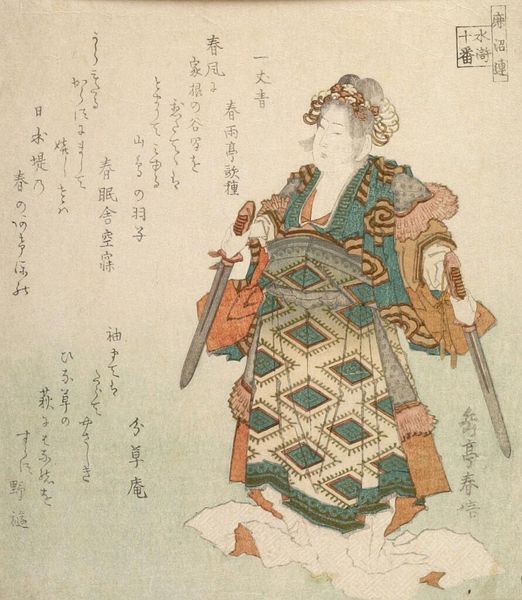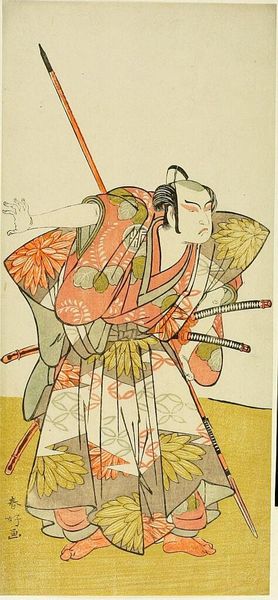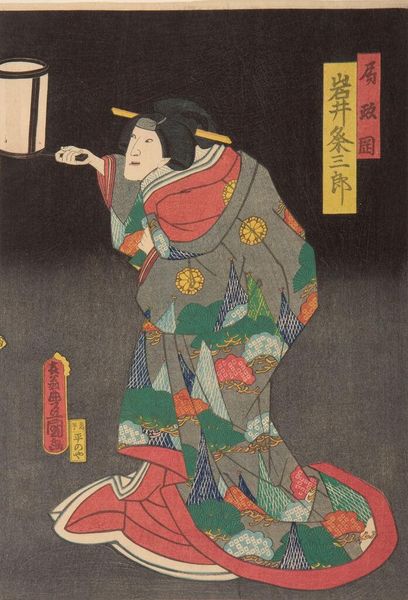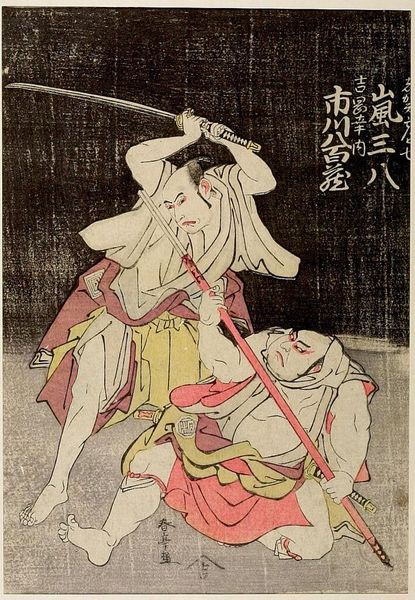
Copyright: Public Domain: Artvee
Curator: Today we're looking at "Katō Kazue no kami Kiyomasa Kneeling by a Banner," a print created in 1878 by Tsukioka Yoshitoshi. It's a striking example of ukiyo-e, focusing on the historical figure Katō Kiyomasa. Editor: My immediate reaction is a sense of solemnity. The muted color palette, the posture of the figure—it all conveys a weight of responsibility, perhaps even regret. He's kneeling, head bowed, next to a large, imposing banner. Curator: Yoshitoshi was fascinated by history and myth. This print participates in a late 19th-century revival of interest in warrior figures like Kiyomasa, casting him in a heroic light. We see how the public persona of the samurai was shaped through these kinds of images, reaffirming traditional values at a time of massive social change in Japan. Editor: The text adds another layer, doesn't it? It tells us about Kiyomasa's accomplishments, especially related to his actions during the Japanese invasions of Korea in the late 16th century. The print isn't simply celebrating valor; it's explicitly commemorating military achievements during imperial campaigns. It prompts questions of ethical considerations surrounding those narratives. Curator: Absolutely. Yoshitoshi is constructing a certain type of masculinity: disciplined, loyal, and undeniably militaristic. It’s part of a larger effort to create a national identity tied to a heroic past, particularly after the opening of Japan to the West and during a time of immense uncertainty. Editor: Yet, the image remains ambiguous to modern eyes. I am struck by his gesture. Kneeling, head down—it signals deference or contrition as much as resolve. The banner, typically a symbol of power and authority, almost seems to loom over him as a reminder of that weight and responsibility. Curator: Perhaps this ambiguity is precisely what makes the print so compelling. Yoshitoshi leaves room for the viewer to project their own understanding onto the figure. Editor: Indeed. By considering Yoshitoshi’s social and historical context, and grappling with Kiyomasa’s imperial legacies, we have uncovered various important questions about gender roles, ethics, and historical representation in late 19th-century Japan.
Comments
No comments
Be the first to comment and join the conversation on the ultimate creative platform.
